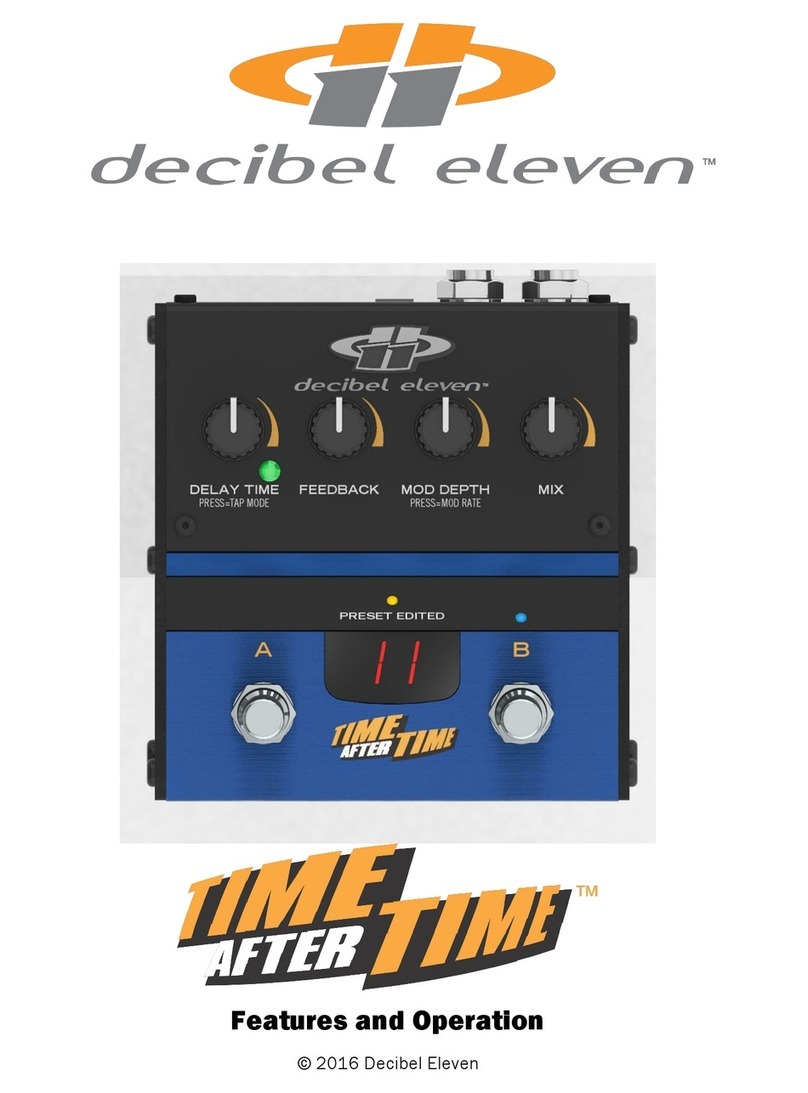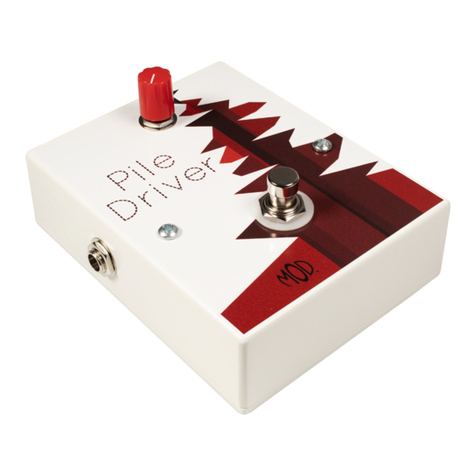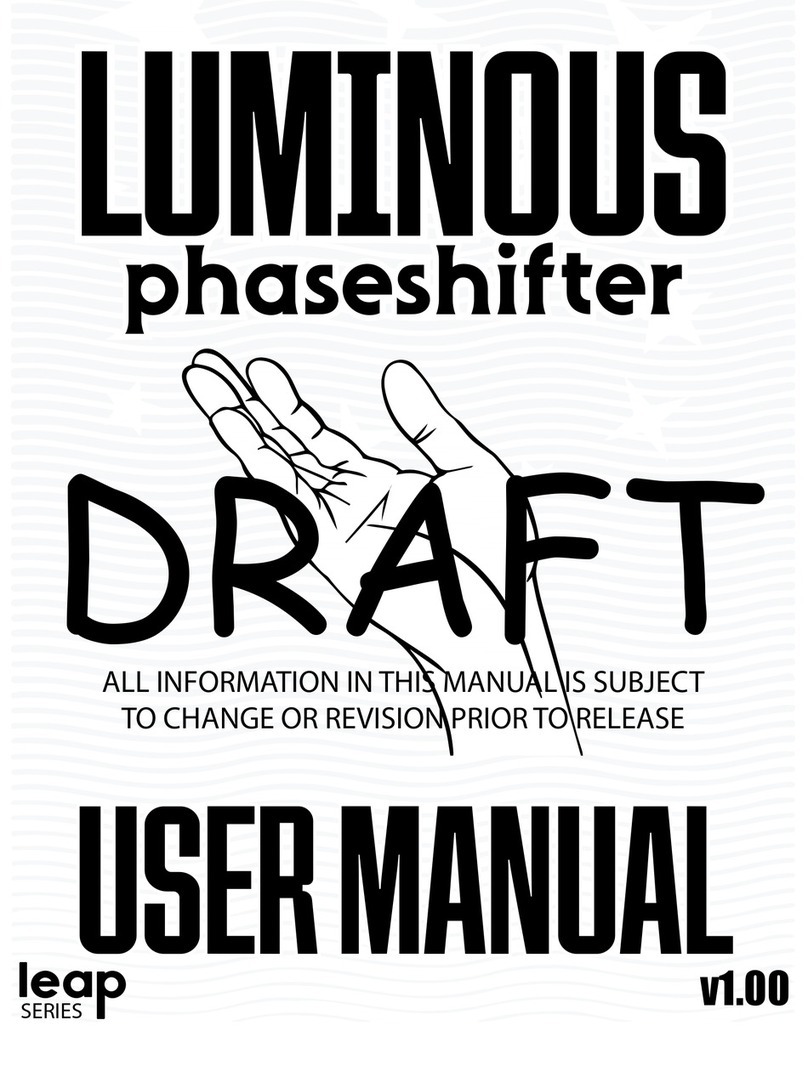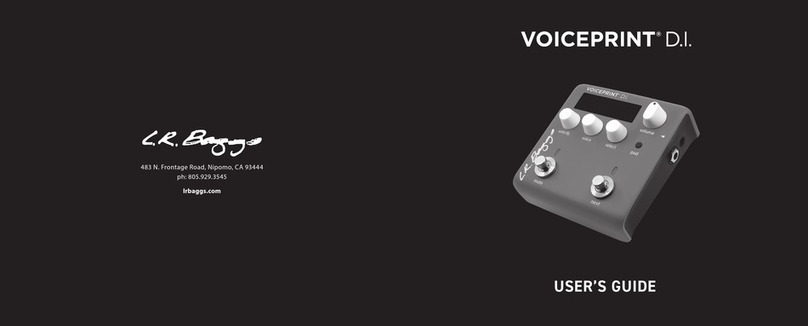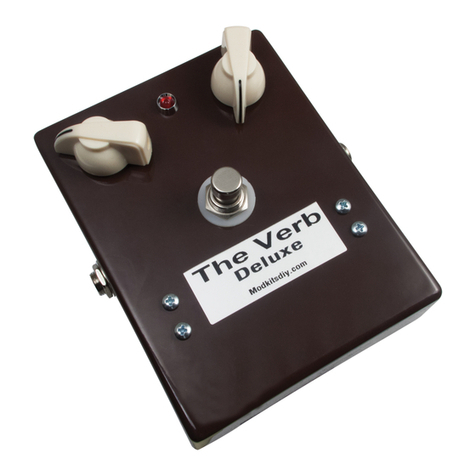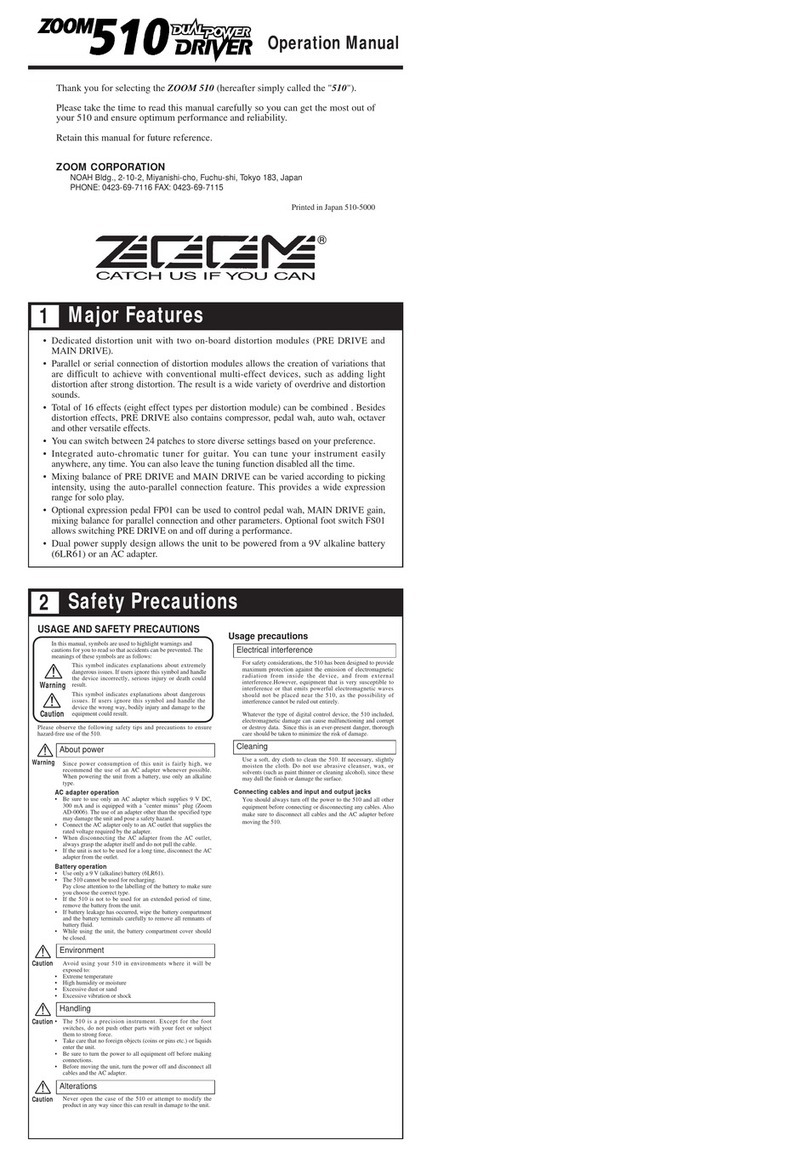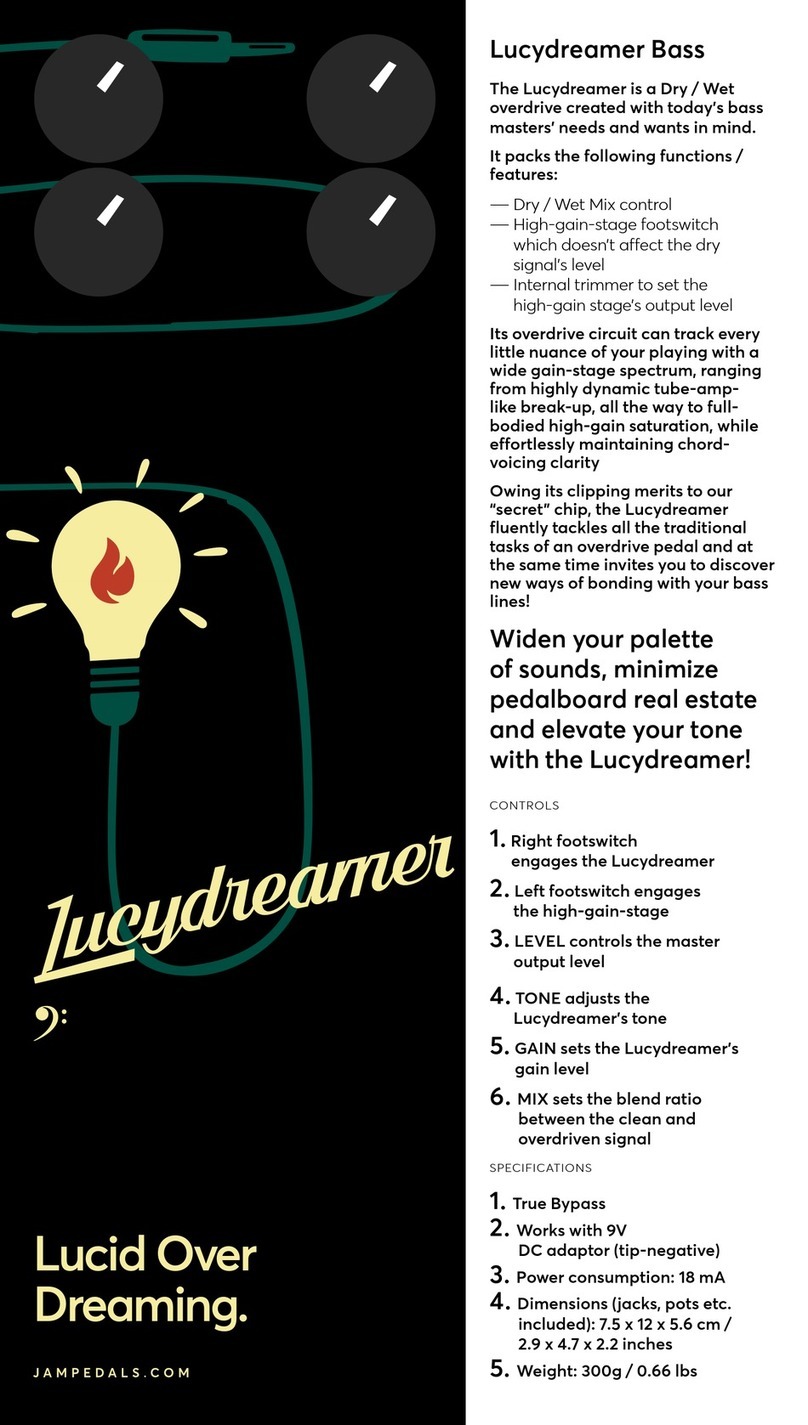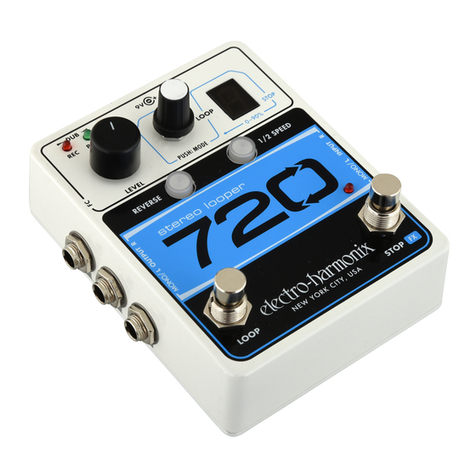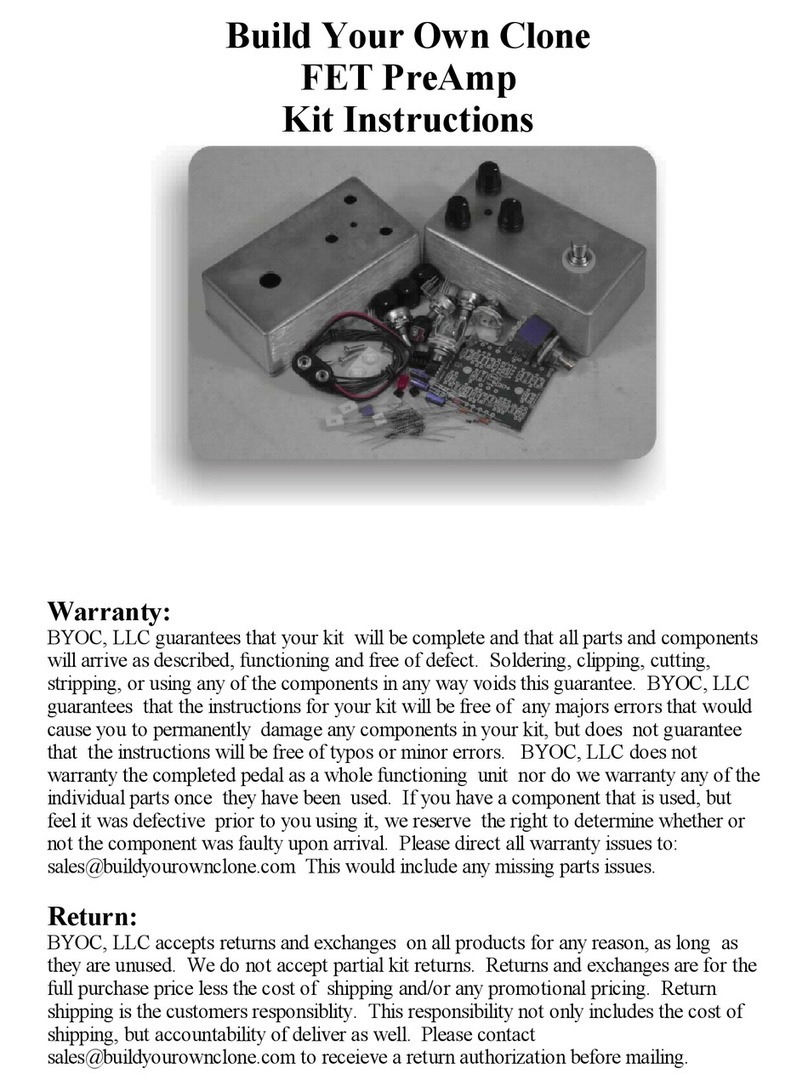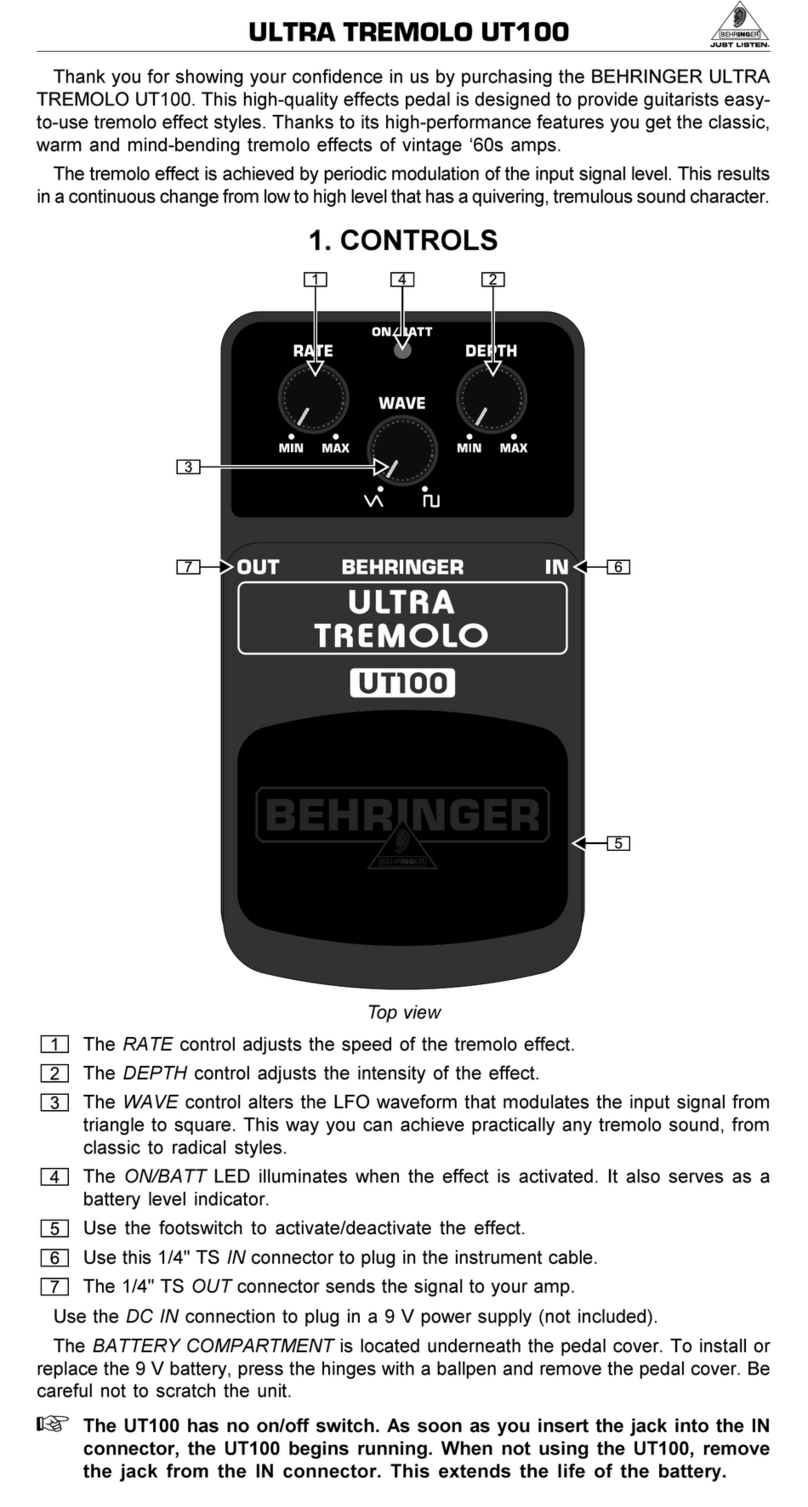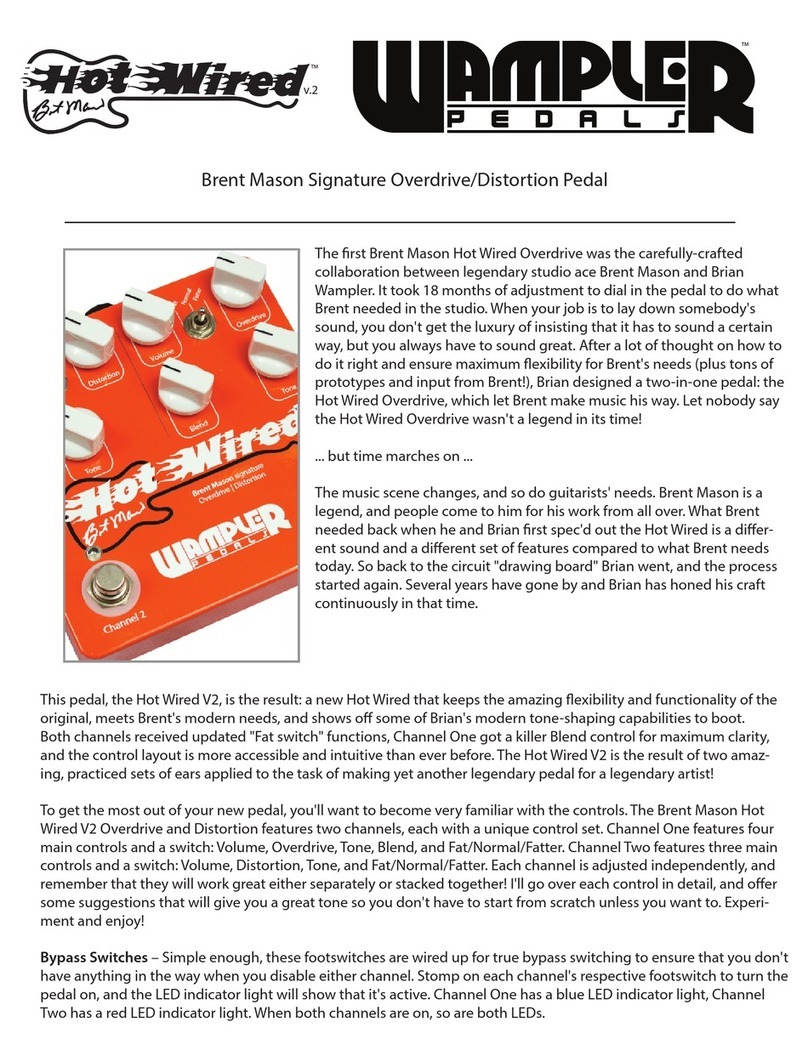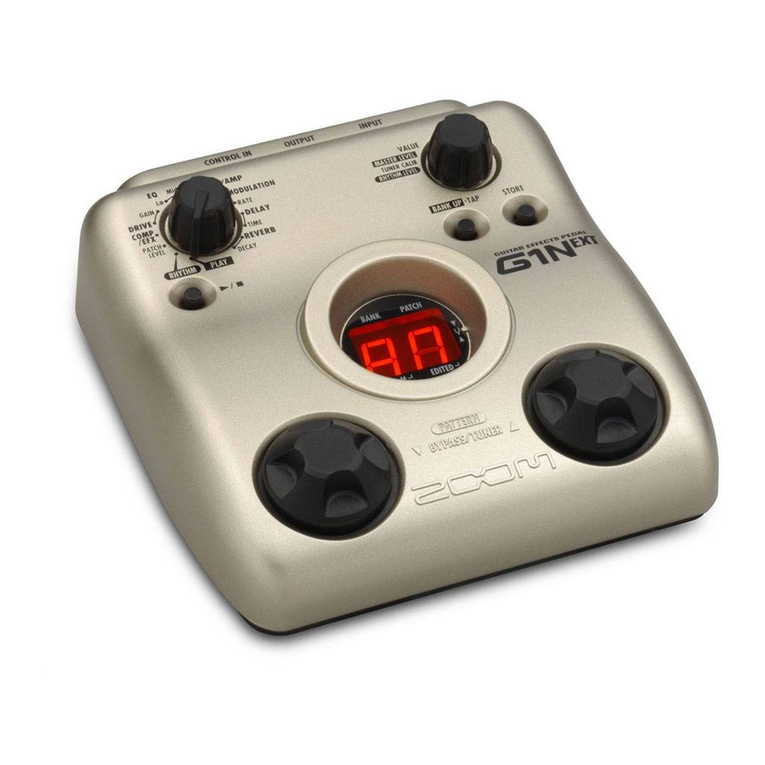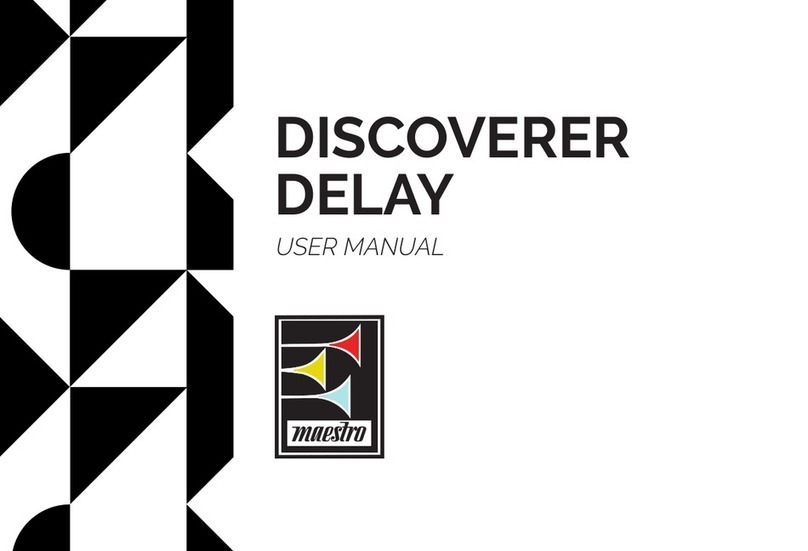Decibel Eleven Dirt Clod Owner's manual

Features and Operation
© 2014 Decibel Eleven

2
INTRODUCTION
The Decibel Eleven Dirt Clod is a unique overdrive distortion pedal that combines an all
analog signal path with full digital control. The Dirt Clod’s analog clipping and shaping
circuits offer a range of great sounding distortion, from clean boost to full driving leads.
And, because each control works digitally, you can now save your favorite settings as
presets, selectable either with the onboard footswitches or via external MIDI control.
Features:
Fully analog signal path
2 types of clipping for added tone versatility
Variable midrange “Core” control defines distortion “body”
Up to 10 user presets
Relay True Bypass
MIDI Controllable
Website
Go to decibel11.com for videos, manuals, accessories, and more.
Declaration of Conformity
Decibel Eleven declares that this product complies with the European Union Council Directives and Standards
requirements for the Low Voltage Directive (2006/95/EC) and the EMC Directive (2004/108/EC).
© 2014 Decibel Eleven

3
CONNECTIONS
Input and Output
Connect your instrument to the input and connect the output to the amplifier. The Dirt
Clod is true bypass, which means that when it is off, there are no active components in
the signal path.
Power
The Dirt Clod can be powered from any regulated 9VDC or 12VDC power supply
capable of providing a minimum of 65mA. The rear panel POWER jack is a standard
2.1mm DC power jack, center negative connection.
MIDI
Connect the MIDI IN of the Dirt Clod to the MIDI OUT of your MIDI controller, or to the
MIDI OUT of the last device in the MIDI chain. Additional MIDI devices can be
connected from the MIDI THRU of the Dirt Clod.
QUICK START
The Dirt Clod default operating mode is PRESET mode. In this mode the ‘A’footswitch
is used to scroll through the presets, and the ‘B’ footswitch is used to enable or bypass
the effect. (see Operating Modes on page 5 for more details)
Because the Dirt Clod uses presets, there are some differences between its operation
and the operation of typical effect pedals. When the Dirt Clod gets enabled, it loads a
preset from memory. It does not immediately load the settings of the knobs as you see
them. The loaded preset may not have the same settings as that of the current knobs.
Once the Dirt Clod is enabled, turning a control knob will not modify its parameter until
the knob becomes aligned with the same setting as that of the loaded preset. Once a
knob has been aligned with the preset setting, it becomes “engaged”, at which point it
will function as a typical pedal knob.
As you turn the knobs, you may see the display change to a horizontal line. These lines
can be used to locate the positions of knobs as they were saved in the current preset.
The displayed line indicates where the current position of the knob is relative to the
preset, either too high or too low, similar to the way a guitar tuner works.
If the middle line is displayed, then the knob is at the same position as that of the
preset setting. If the top line is displayed, the current knob position is higher than the

4
preset setting. Turn the knob counter-clockwise to lower the value until the middle line
is displayed. If the bottom line is displayed, the knob position is lower than the preset
setting. Turn the knob clockwise to raise the value until the middle line is displayed.
Once the middle line is displayed, the knob is effectively “engaged” and will operate as
a typical real-time control knob.
See the section “Working with Presets” for more details on saving presets.
TONE CONTROLS
DIRT
The DIRT knob controls the input gain. Turn the knob counter-clockwise for cleaner
tones and clockwise for more drive and sustain. The Dirt Clod is capable of clean boost
by turning this knob down, while turning up the MASS control.
FORM
Pressing on the DIRT knob toggles the FORM, which changes the clipping
characteristics. With the LED off, the clipping is thicker and heavier. When the clip LED
is on, the clipping will sound slightly compressed and more focused.
CORE
The CORE knob defines the body of the distortion. When set fully clockwise, you get a
thick, full midrange. This is great for thick leads and blues tones. As you start to turn
the knob counter-clockwise, you begin to thin out some of the midrange, giving more
articulation to notes and chords. Turning further counter-clockwise begins to scoop
some lower midrange, which can be great for removing low-mid mud.
CRYSTAL
The CRYSTAL knob controls the high frequencies. Turn clockwise for brighter grit and
counterclockwise for a darker, more rolled off sound.
MASS
The MASS knob controls the output level. Turn clockwise for more volume and counter-
clockwise for less volume. Use this knob in conjunction with the DIRT knob to distort
before the amp or turn it up to overdrive a tube amp input.
A quick way to immediately enable the Dirt Clod and play with its settings is to
press the footswitch and then sweep each knob down and up through its range.

5
WORKING WITH PRESETS
The 10 user presets can be selected using the footswitches in either PRESET mode or
BANK mode. Please see the following section on Operating Modes for more details.
Loading a Preset
When the Dirt Clod gets enabled, a preset is loaded from memory. The control settings
are taken from the saved preset and not from the physical position of the control
knobs. Therefore, the position of the knobs may not be aligned with the settings of the
loaded preset. For example, the loaded preset may have DIRT set at 11 o’clock, but the
physical DIRT knob is set to 3 o’clock.
In order to quickly find the current preset’s settings, the display is used to indicate
knob position. Once a knob starts to rotate, the display will show whether the knob is
set too high or too low, similar to the way an electronic tuner works. The upper line of
the display is lighted if the current knob position is higher than the preset setting, and
the lower line of the display is lighted if the current knob position is lower than the
preset setting. Once the knob position is aligned with the preset setting, the middle line
of the display will light.
Editing a Preset
When turning knobs, the control will not engage until the knob position reaches the
setting of the currently loaded preset. For instance, in the previous example, turning
the DIRT knob will not change the sound until the knob reaches the 11 o’clock
position. Once the DIRT control is engaged, it will behave like an ordinary pedal knob.
Once changes are made to the knob settings from that of the loaded preset, the yellow
PRESET EDITED LED will light.
Saving a Preset
All knob settings can be saved to the current preset number at any time by simply
pressing and holding the DIRT knob for 5 seconds. All of the LEDs will flash to indicate
the preset has been saved.
OPERATING MODES
The top panel footswitches can function in two different modes to access presets.
BANK Mode
In BANK mode, the two switches act like two independent preset switches. Pressing
the ‘A’ switch will toggle the Apreset, and pressing the ‘B’ switch will toggle the B

6
preset. Pressing ‘A’ while ‘B’ is active will switch ‘A’ on and switch ‘B’ off, and vice-
versa. In BANK mode, the 10 user presets are accessed in 5 banks of 2 presets, and
the current bank number will be displayed. In order to change banks, press and hold
the DIRT knob and then press ‘B’ to increment the bank, and ‘A’ to decrement the
bank.
PRESET Mode
In PRESET mode, the ‘B’ footswitch is used to enable or bypass the preset, and the ‘A’
footswitch is used to scroll through the available preset numbers. When the Dirt Clod is
bypassed, the display will show the pending preset number. Press the ‘A’ footswitch to
change the pending preset until the desired preset number is displayed. Press the ‘B’
footswitch to enable the displayed preset.
Once a preset is enabled, you can use the ‘A’ footswitch to go directly to another preset
without bypassing. Use the ‘A’ footswitch to select the next desired preset number.
Notice that the decimal point will be displayed to indicate that the displayed preset
number is pending (not active). Press the ‘B’ footswitch to activate the displayed
preset.
In order to more effectively manage scrolling in PRESET mode, it is possible to set a
limit on the number of presets used. This cuts down on the need to scroll through
unused presets. For example, if you are only using 3 presets, then in preset mode you
can use the ‘A’footswitch to scroll 1, 2, 3, 1, 2, 3, etc. See the section below for setting
the preset limit.
Setting the operating mode
The Dirt Clod is initially set to PRESET mode. To change the mode settings, disconnect
the power from the pedal. Press and hold the ‘B’ footswitch while applying power to the
pedal. The display will indicate the current mode setting, ‘P’ (PRESET) or ‘b’.(BANK).
Use the ‘A’ and ‘B’ footswitches to change this setting as desired.
To change the preset limit when using PRESET mode, first select PRESET mode such
that the display shows ‘P’. Then, press the DIRT knob to display current preset limit.
Turn the DIRT knob to change the limit from 2 to 0 (0=10). For example, setting the
preset limit to 4 will limit PRESET mode access to only presets 1-4.
Exit by disconnecting power. Your settings will be saved.
MIDI
There are two ways that the Dirt Clod can be controlled via MIDI.

7
Dirt Clod presets can be recalled using any or all of 128 MIDI Program Changes. Each
MIDI Program Change received by the Dirt Clod can be mapped to one of its 10 presets
or to bypass. See “Mapping Presets” section below for details.
Real-time control of each of the Dirt Clod’s parameters can be achieved using MIDI
Continuous Controller messages. MIDI Expression Pedal data can be assigned to any
of the 4 Dirt Clod knobs as well as the FORM switch (clip style). See “MIDI Continuous
Controllers” section below.
Setting the MIDI Channel
The Dirt Clod defaults to receiving MIDI data on MIDI Channel 1. To change the MIDI
channel for receiving MIDI data, first disconnect power from the pedal. Then, press and
hold the ‘A’ footswitch while applying power to the pedal. The current MIDI Channel will
be displayed. Use the ‘A’ and ‘B’ footswitches to change the channel. Available
channels are 1-16 (channels 10-16 are indicated as 0-6 with the center yellow LED
lighted). To save and exit, simply disconnect power to the pedal. Your MIDI Channel will
be saved.
Mapping Presets
Any MIDI Program Change can be used to load any preset, or to bypass the pedal.
First, send any MIDI Program Change to the Dirt Clod on its set MIDI Channel. The Dirt
Clod should respond by loading a preset or bypassing. If the Dirt Clod is not on the
preset you would like, simply use the controls on the Dirt Clod to select the desired
preset (or bypass it) just as you normally would. However, when making the selection,
continue to hold the footswitch until the LEDs flash, indicating the MIDI change has
been mapped. The Dirt Clod will now make this selected change each time that this
MIDI Program Change is received.
MIDI Continuous Controllers
Any of the Dirt Clod’s knob settings can be controlled in real time using MIDI
Continuous Controllers. The following chart shows the CC#s for the various controls:
Function CC# Value
DIRT 34 0-127
CORE 35 0-127
CRYSTAL 36 0-127
MASS 37 0-127
FORM 38 0-63:OFF, 64-127:ON
So as not to cause a jump in parameter value when receiving MIDI CC data, the Dirt
Clod will not begin to respond to MIDI CC data until the received CC value is the same
as the current value of the corresponding control.
Table of contents
Other Decibel Eleven Music Pedal manuals


